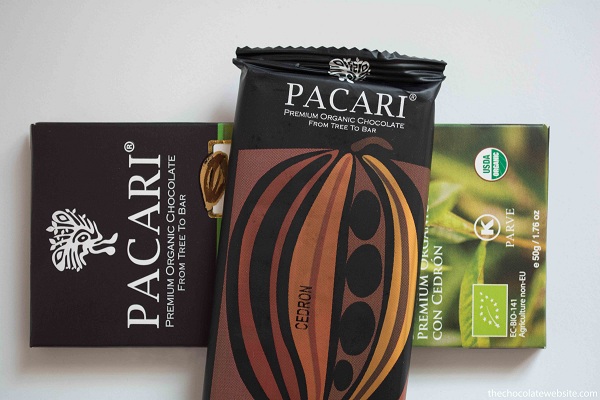Peeling an Appealing Pacari Bar
How’s THAT for a title? It’s not likely you read about peeling an appealing Pacari bar every day. It’s not every day I get to do it. It may be a once-in-a-life-time-experience. Who knows.
The first step in the entire process was to actually obtain a Pacari bar, which is no small feat. They’re not available locally; budgeting and shipping are involved. That, and deciding exactly *which* Pacari bar. Finally, I decided on Andean Lemon Verbena.

Upon arrival, I was a little alarmed to find a big round sticker smack dab on the front of the chocolate wrapper (stuck there by the third party seller, not by Amazon or Pacari), announcing some sort of discount. It was effectively ruining most photoshoot opportunities (aside from ones involving cover-ups or bizarre camera angles). And it wasn’t one of those stickers that would just peel off with a little coaxing. AND it was blocking the pretty little stamp announcing this bar to be an International Chocolate Awards 2014 World Gold Winner.
Google informed me that my best chance to remove such a label off of paperboard would involve lighter fluid and sandpaper, two things I don’t just happen to have in my drawer to make/eat/photograph chocolate with. The Pacari went into the fridge for awhile until I contemplated my next move. Eventually, the sticker was scored gently with sandpaper (it turns out we had some), just like Google said to do, to allow the fluid to penetrate the space between the label and the paperboard. (My brother rustled up a can of something that he said would be an acceptable substitute to lighter fluid. “Just keep it away from matches.”) I honestly don’t know whether it was the time spent in the refrigerator or the little sandpaper massage, but the label peeled right off (no fluid required)!
That, however, was only the first step in the Pacari peeling process. It turns out, when you open a Pacari, there is yet another fully printed Pacari wrapper instead of foil, which I thought was fun. (Clarification: When you open a lemon verbena Pacari, inside is a fully printed wrapper. I can’t vouch for the other flavors.)

Peel that away, and you’ve arrived. To the chocolate, that is. While it is rather plain in looks, it’s not so plain in taste (which is where the appealing part comes into play). The lemon flavor, sharp at first, mellows out and gives way to a delicious, fruity (to me!) chocolate made from beans grown in Ecuador, where Pacari hails from. I’m certainly no stranger to South American cacao. I eat it all the time. (Not in its pure form, of course. I eat my cacao conched and sugared and tempered and barred or squared or pralined, as most of of us do.) Ecuadorian cacao, on the other hand, is rather new to me. I can tell it is still going to take a while before I will be able to taste much of a difference between beans grown in different locations, but, in the meantime, I’m enjoying the ones I am able to try.
(One or two of my taste testers may have said they thought this chocolate tasted like soap. To which I say: Stop eating soap. It is ruining your tastebuds!)
And there you have it; peeling an appealing Pacari bar, explained. If you need your Pacari peeled, I would be happy to do it for you. Of course, I charge a fee. And I’m pretty sure you could guess how I’d like to be paid.
